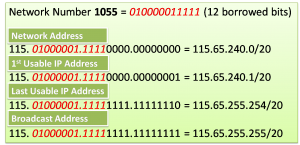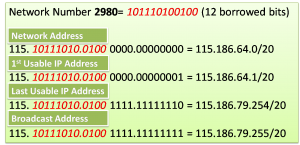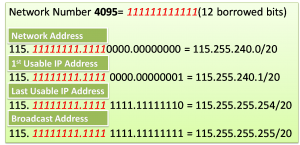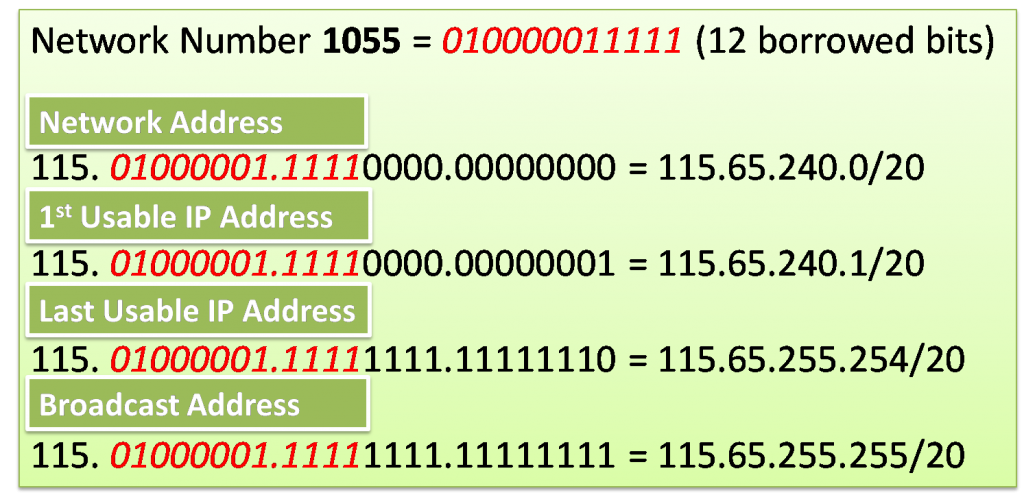Creating 4000 Subnets from a /8 Prefix – Exclusive How to Guide
Some organizations need more subnets. For example, a small ISP requires 4000 subnets for its clients. Each client required abundant space in the host portion to create their subnets. The network address 115.0.0.0/8 has a default subnet mask of 255.0.0.0 or /8 prefix. The /8 prefix means that there are 24 host bits available to borrow.
To create subnets, we must borrow bits from the host portion of the IP address from left to right, with the first available host bit. We will borrow a single bit at a time until we reach the number of bits necessary to create 4000 subnets. We need to borrow 12 bits to create 4096 subnets. So, for borrowing 12 bits, we need 8 bits in the second octet and 4 extra bits from the third octet to borrow.
The resulting subnet mask for all sub-networks converts from (255.0.0.0 – 11111111.00000000.00000000. 00000000) to (255.255.240.0 – 11111111.11111111.11110000. 00000000) or a /20 prefix.
The network address of the/8 network is 115.0.0.0/8, and the broadcast address is 255.0.0.0 (11111111.00000000.00000000. 00000000). The resulting subnets of borrowing 12 bits create subnets from 115.00000000.000000000. 000000000/20 to 10.11111111.11110000.000000000/20 (115.0.0.0/20 to 115.255.240.0/20). Each subnetwork contains 2096 hosts. The Sub-networks start at 0 and continue to 4095 (4096 sub-networks). So, how can we find the address range of any subnetwork?
There are numerous ways to find the address range of any sub-network. We will find the address range for any sub-network using the sub-network number. There are five steps to find the address ranges for any sub-network:
- Convert the network number into binary.
- Place the binary digits into the borrowed bits positions.
- All bits in the host portion will be 0 in the host portion.
- All bits in the host portion will be 0 for the first usable IP address, except the most significant bit, which should be 1.
- All bits will be 1’s except the rightmost bit for the last usable IP address, which should be 0.
- All bits should be changed to 1 in the host portion of the broadcast address.
Examples of finding the network range for any subnetwork of the above-mentioned/8 prefix network
Example 1 – Find the address range for network number 1055.

To find network number 1055’s address range, first, we need to find the binary of 1055, which is 10000011111. It is 11 bits, and we have borrowed 12 bits, so we can add 0 at the leftmost side, which is 010000011111.
After converting 1055 into binary, place the 12-bit value in the places of borrowed bits in the 2nd and 3rd octets. Now, follow the rules to find the network address, broadcast address, and first and last usable IP addresses.
Example 2 – Let us find the address range for network number 2040.

Example 3 – Find the address range for network number 2980.

Example 4 – Find the address range for network number 4025

Example 5 – Let us find the address information for the last subnet, 4095.

You can see that the borrowed bits in the network portion are at their maximum now. Because 4095 is the last sub-network.
